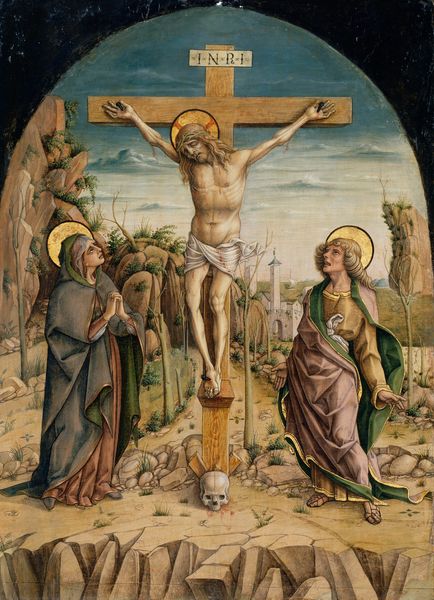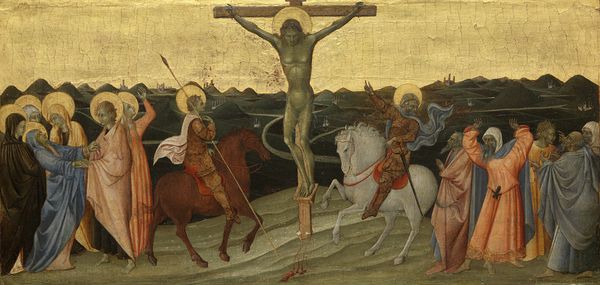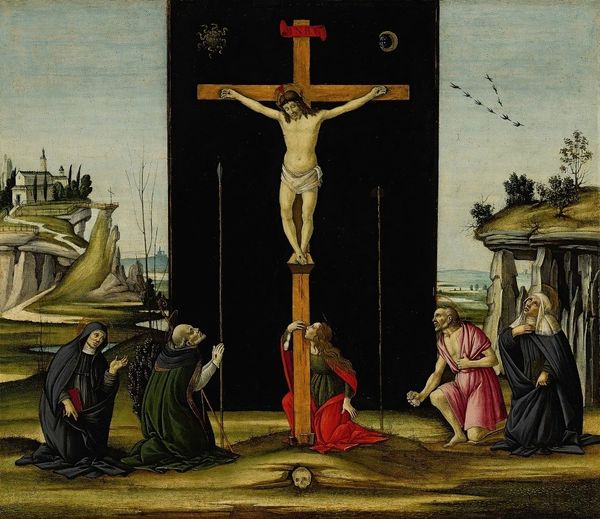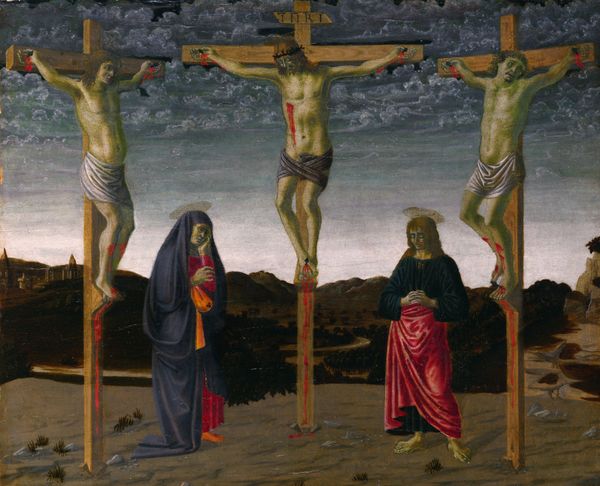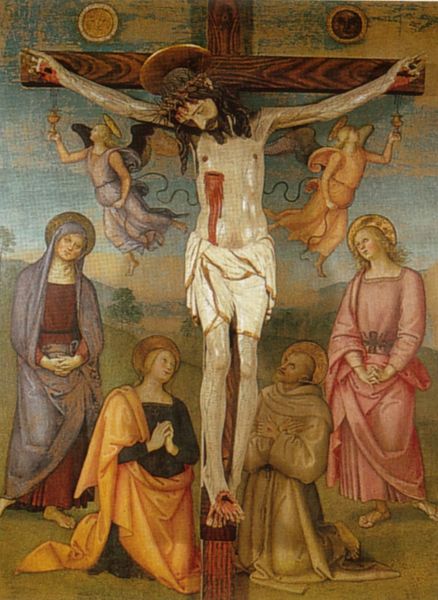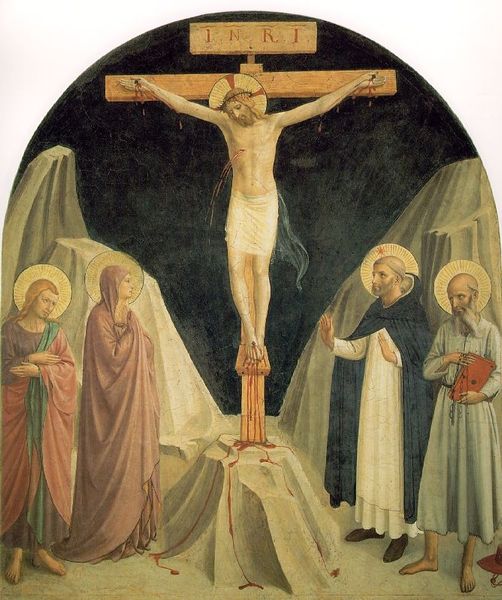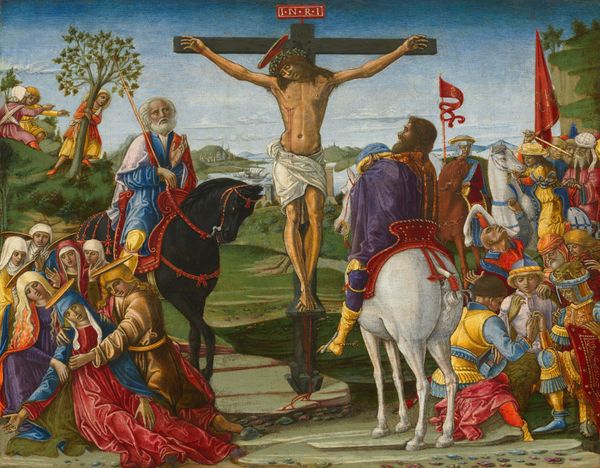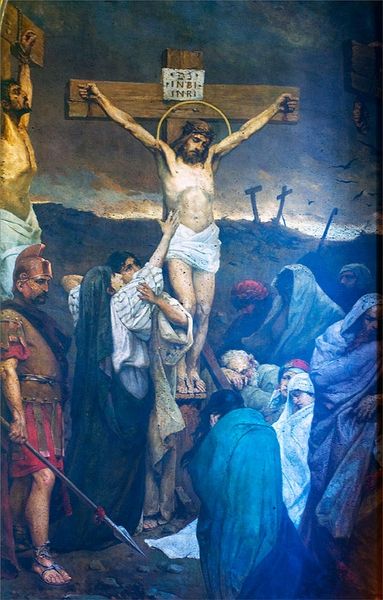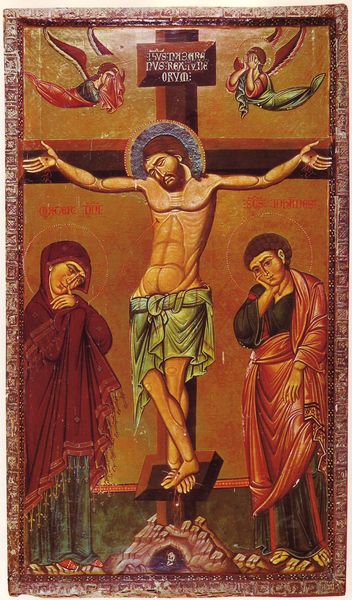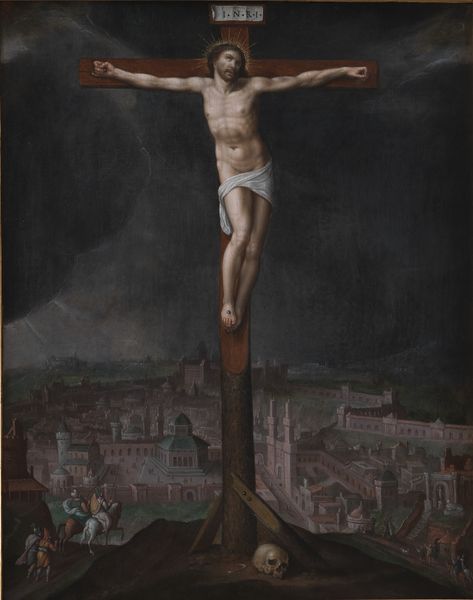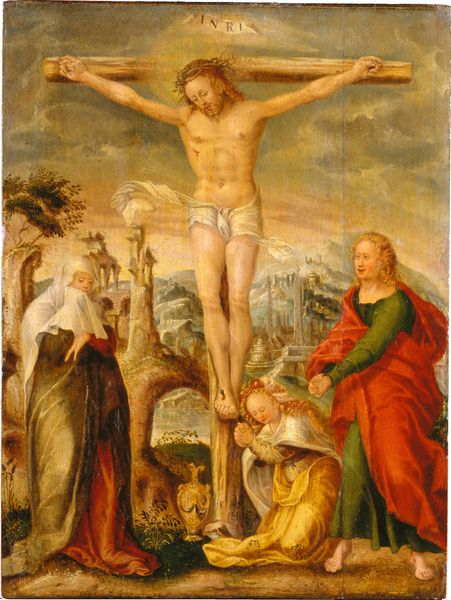
The Crucifixion with Saint Jerome and Saint Francis c. 1445 - 1450
0:00
0:00
panel, painting, oil-paint
#
portrait
#
panel
#
painting
#
oil-paint
#
landscape
#
figuration
#
oil painting
#
history-painting
#
italian-renaissance
#
early-renaissance
Dimensions: overall: 61.5 x 49.1 cm (24 3/16 x 19 5/16 in.) framed: 96.5 x 75.6 x 10.2 cm (38 x 29 3/4 x 4 in.)
Copyright: National Gallery of Art: CC0 1.0
Editor: Here we have Pesellino's "The Crucifixion with Saint Jerome and Saint Francis," likely from the late 1440s. It's an oil painting on wood panel. The colors are striking – that vibrant red halo around Christ contrasts so much with the muted landscape. It’s an intense scene, but almost dreamlike. What draws your eye when you look at it? Curator: Ah, Pesellino! For me, it’s the juxtaposition of the spiritual and the earthly. Look at Saint Jerome, kneeling, so grounded, literally touching the earth. Then, ascend with your gaze up to Christ—his body almost glows against that peculiar, almost cracked sky. Do you see those celestial bodies— a blood-red orb opposite an eerily green moon? What do they suggest to you? Editor: Ooh, interesting. It makes the scene feel more universal, not just one moment in time, right? It feels otherworldly almost. And the skull at the base of the cross--it is an intriguing detail, too! Curator: Exactly! That skull is a “memento mori”—a reminder of mortality. Placed so prominently beneath the crucified Christ, it is like Pesellino's subtle nudge, asking us to consider the transience of life against the promise of eternal salvation. It's this blend of human vulnerability and divine hope that resonates. What emotions do you think Pesellino was trying to evoke in the viewer? Editor: Definitely a sense of contemplation. And the vulnerability you mentioned, too! I feel like I’m seeing a very human side of faith. Curator: Yes, Pesellino really invites us into a devotional space, to grapple with profound themes in such an accessible way. That tension between the familiar and the strange is part of what makes early Renaissance painting so enduring, don’t you think? Editor: Absolutely! I hadn’t really considered the full impact of those contrasting elements until now. I appreciate the insight.
Comments
No comments
Be the first to comment and join the conversation on the ultimate creative platform.
